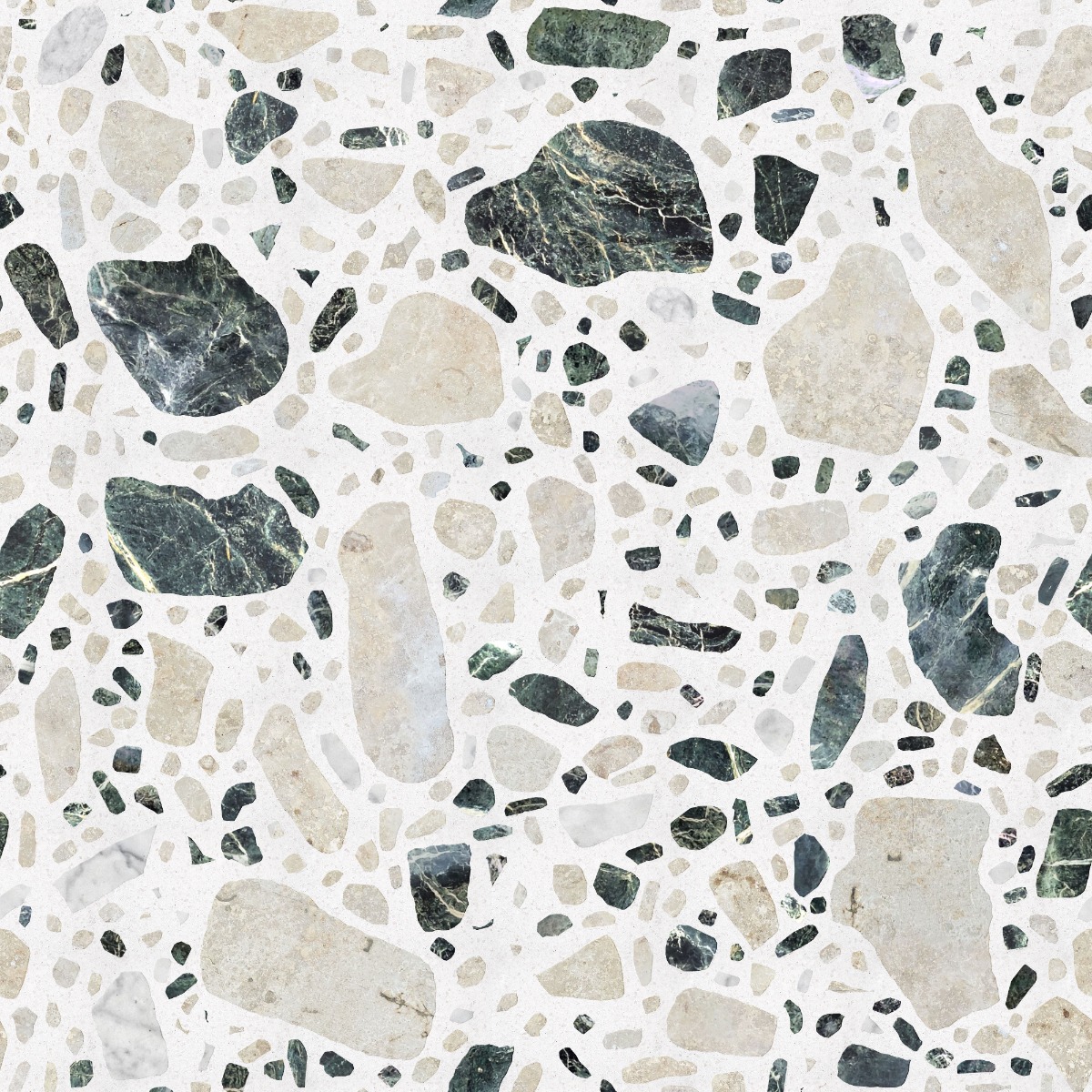Limestone and Marble, Varied Size Terrazzo
Category
Stone
Download
Edit
Green marble is a popular stone product used within architecture and construction for both internal and external finishes. While pure marble is typically white, green marble is created as a result of mineral impurities within the rock, creating hues of dark, light, forest, and emerald greens. In modern buildings, green marble is most commonly used for flooring, countertops, wall cladding, staircases, and sculptures.
A seamless stone texture with green marble arranged in a varied size terrazzo pattern. Seamless textures can be tiled repeatedly across a surface without visible seams making them useful for architectural drawings and 3D models. This image can be used as a SketchUp texture, Revit material or imported into Photoshop for use in 2D illustrations. A high resolution version of this texture is available, as well as CAD hatches and PBR maps with Architextures Pro.

